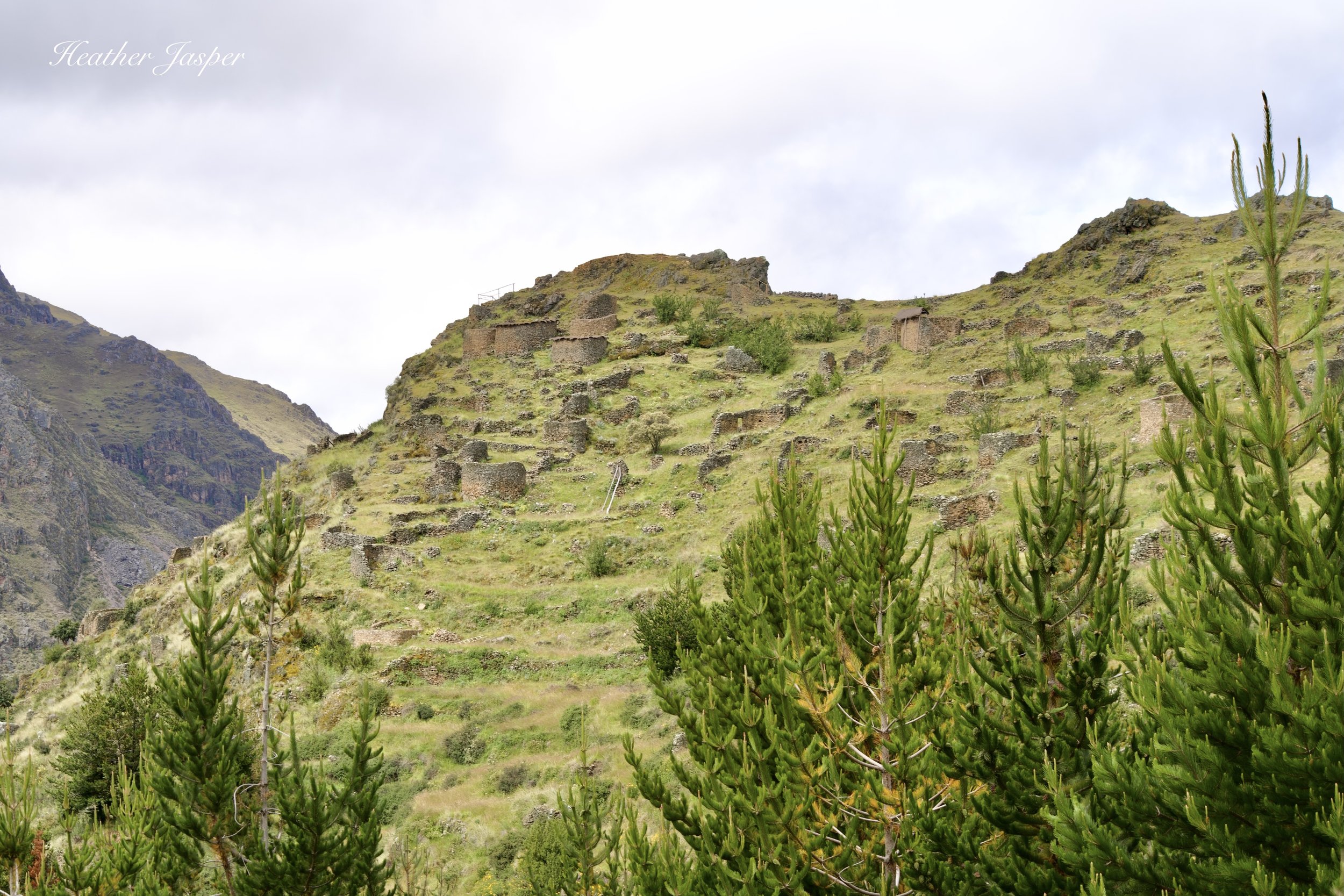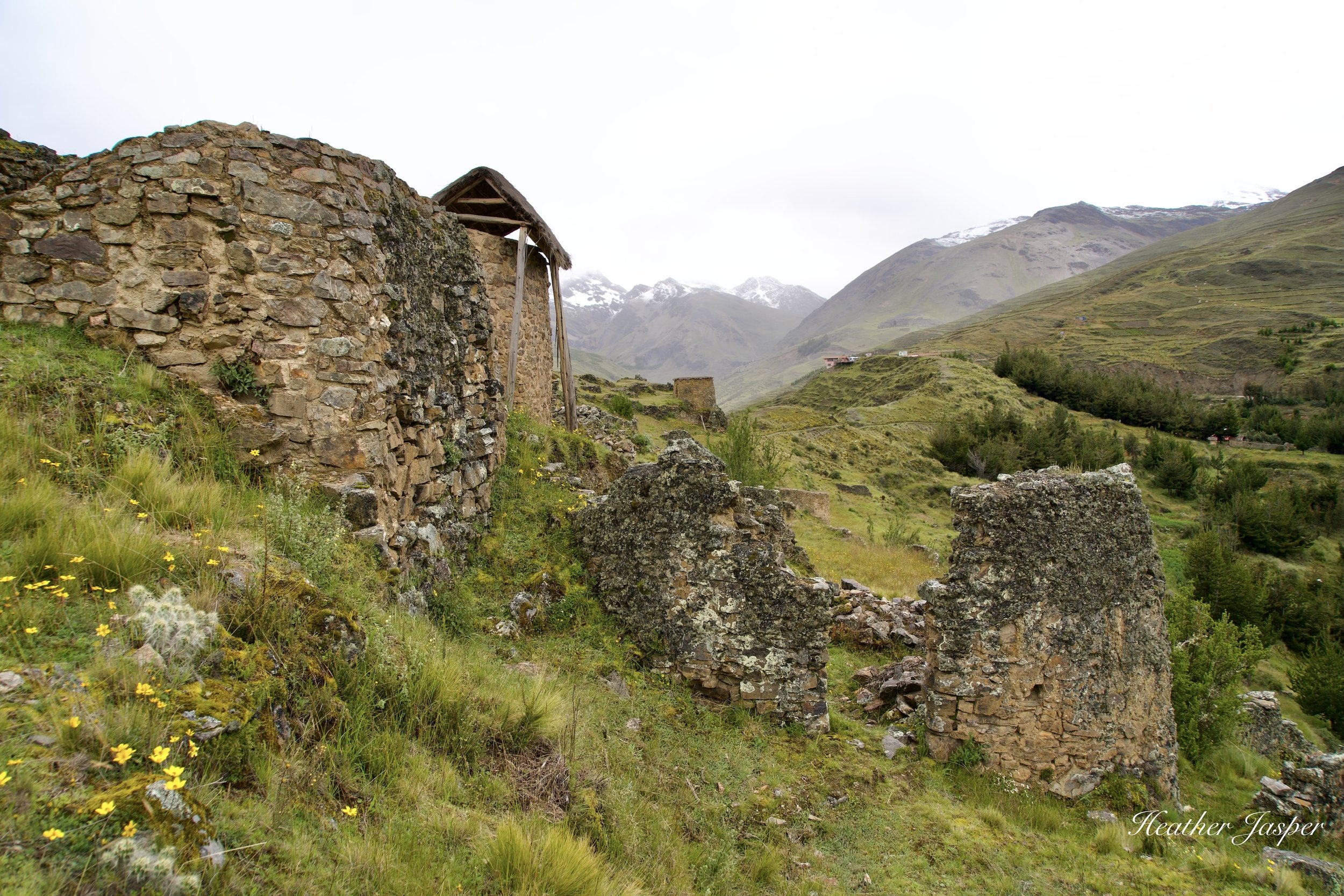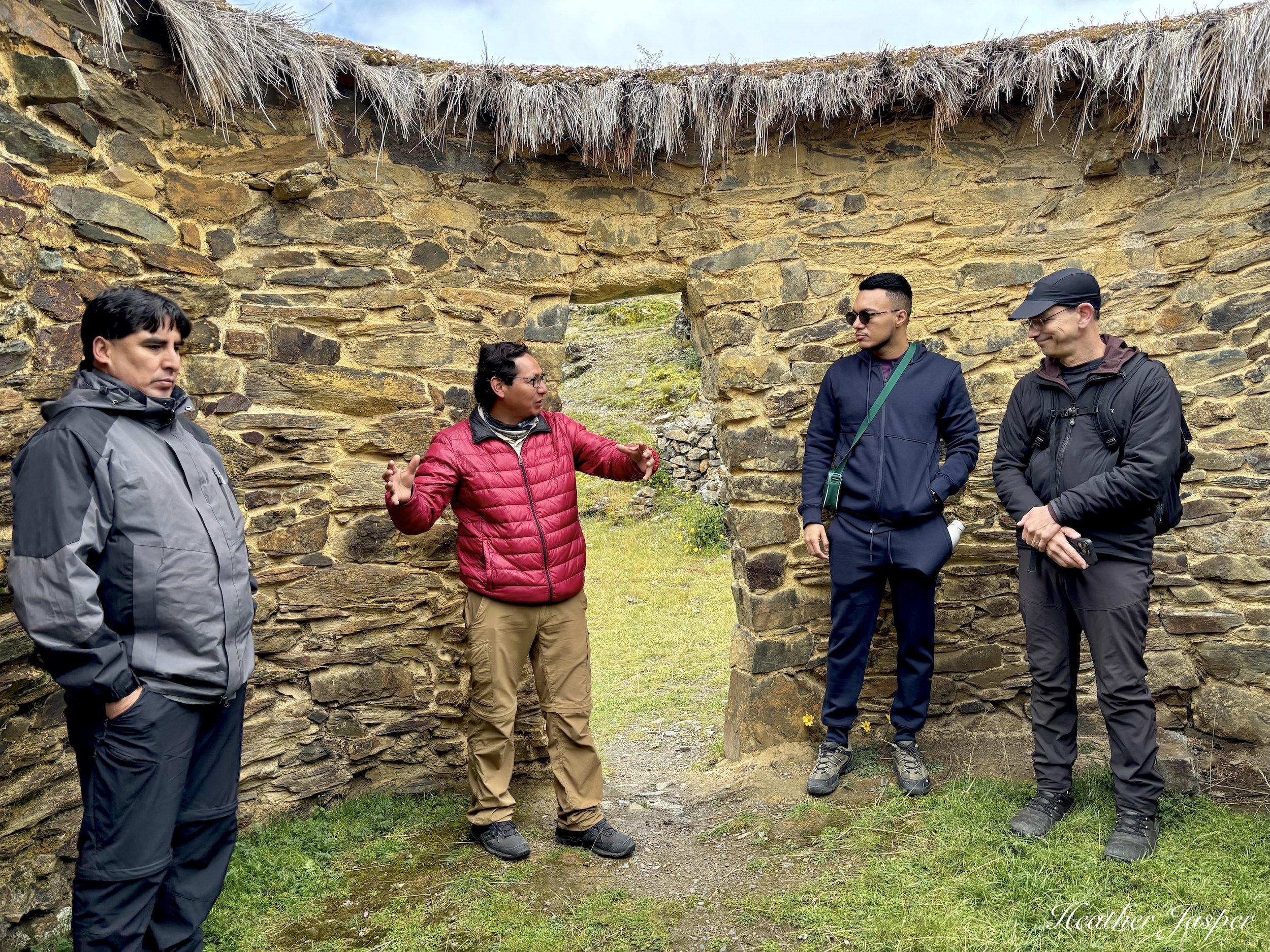Ancasmarca
Between Calca, in the Sacred Valley, and Lares, which is famous for its hot springs, lies the ancient town of Ancasmarca.
Ancasmarca is on a promontory in the valley between Calca and the Lares pass.
I’ve been to Ancasmarca twice and seen two very different places.
My first time to Ancasmarca was July 2020, in the dry season, and my second was April 2025, in the rainy season. As you can see, in July the sky is blue, but the hills are yellow. In April the sky may be cloudy, but the hills are green. During the rainy season snow accumulates, especially on the glaciers above 5,000m/16,400ft above sea level.
Ancasmarca’s round buildings and rounded doorways are unique in the Cusco region.
Ancasmarca is at 3,150m/10,335 ft above sea level, which is lower than Cusco but higher than most of the Sacred Valley. If you’ve spent a couple days in Cusco, then the altitude at Ancasmarca probably won’t bother you.
Ancasmarca means Blue Town in Quechua, which is not its original name.
It is a unique city because of the round buildings, made of slate which look blue from a distance. Very few archeological sites in the Cusco region have round buildings, though Raqchi is one example.
According to archeologists, Ancasmarca was built by the Killke culture, an early-Inca culture that coexisted with and then blended into Inca culture. It’s sometimes spelled Ankasmarca but the original name has been lost. The round buildings were originally homes but in the later decades of the Inca civilization, they were used as storehouses.









Ancasmarca was first a city.
As a city, Ancasmarca reminds me of Machu Picchu and Choquequirao because of its location high on a promontory with expansive views up and down the valley. An Inca trail, still paved with stone, runs from Ancasmarca down to Calca in the Sacred Valley. I walked the trail in 2020 and loved how it follows a small river. It’s easy to see why somebody would want to build a town there.








The Inca used Ancasmarca for storage.
As storehouses, Ancasmarca reminds me of Pinkuylluna because of the wind that inevitably whistles over and around the buildings. They are cold and dry, perfect for storing crops and the things that the Inca brought from the rainforest. The modern road, and ancient trail, lead from Calca up to Ancasmarca, then cross the Lares pass and head downhill to Lares and then on down to the rainforest. Ancasmarca is the most logical place to store products from the rainforest until they’re needed in Cusco or the Sacred Valley.
Ancasmarca’s Inca Trail
The Inca trail at Ancasmarca is called the Waqanwayqo trail and it leads from the Sacred Valley to the rainforest. Many sections are still paved with stone from centuries ago.
How to get there?
From Calca, drive north towards Lares for 35-45 minutes, depending on road conditions. The two signs above are at a bend in the road, so you can’t miss it.
What to bring?
Bring water and snacks because there is nowhere to buy food or water nearby. Sometimes local people will sell souvenirs at the artisans’ center, but only if they know that tourists will be arriving. Since Ancasmarca is off the beaten path, local artists don’t count on visitors to come every day.
The Lares Pass
From Ancasmarca go up to the Lares Pass then down to the rainforest by either Lares and Choquecancha or Amparaes.








